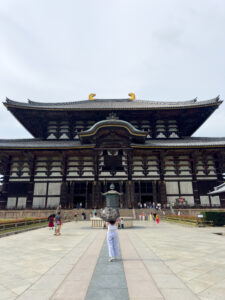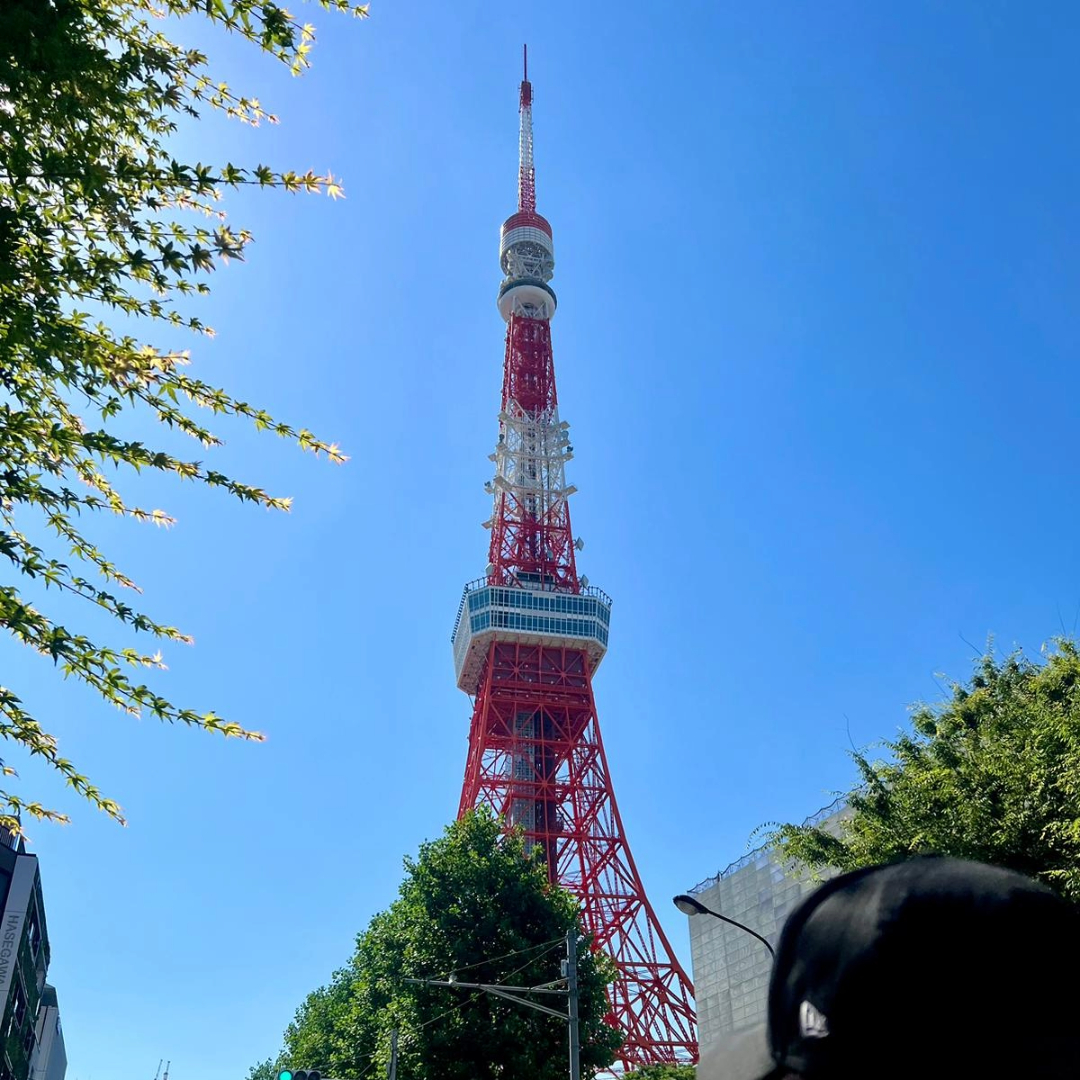
As the week comes to an end, students embarked on their final tour visits in Tokyo before traveling to Kyoto on Monday. However, as students approached their next destination, their anticipation grew as they realized the heights they would reach.
The warm sun and cool breeze on Saturday morning set perfect conditions for the day’s activities.
First up: Tokyo Tower. At over 1,000 feet tall, the tower loomed over the class as they stared in awe at the bright red Eiffel Tower-inspired radio tower in the district of Shibakoen. Tokyo Tower, officially known as 日本電波塔, or Nippon denpatō, was just a 15-minute train ride on the Ginza line from the hotel in Asakusa. Actually, though the tower appears to be red and white, it is technically a color called “international orange” and white, colors dictated by aviation law.
On the way there, sophomore Rosey Mendoza was curious to learn more about the building of the tower.
“I’m really excited to go to Tokyo Tower because I would always see it in shows and movies so it would be amazing for me to be able to see it in person,” Mendoza said. “I am also looking forward to learning more about the structure because I don’t know too much about it.”
Upon arrival, the class simultaneously gazed up into the sky in excitement as “oohs” and “ahhs” came from the group.
“It looks similar to the Eiffel Tower in Paris for sure, but this one is a little bigger,” digital media innovation major Laura Restrepo Posada said as the class approached the tower. “And of course the colors make it stand out and make it more contemporary.”
The group was led into the building where they received a special ticket for a reservation at the very top floor of the tower. The ride up was thrilling as they ascended 300 meters in the air on a jam-packed elevator. Everyone’s ears popped on the way up due to the change in elevation, but the discomfort was quickly forgotten when the elevator passed a window, and they were able to catch a glimpse of the city that was now far below them.
At the top, the Tokyo Tower staff shared with the class that the tower’s height is 333 meters and that it is, in fact, taller than the Eiffel Tower. Stepping out of the elevator, our eyes were drawn to a captivating 360-degree view of the city.
“It really goes on forever,” advertising major Abigail Tuttle said.
The top observation floor was made of geometrical mirror walls that lit up the room naturally reflecting light coming in from the many windows lining the outside walls. Each side of the room offered a unique viewing experience as one half overlooked the vast city and the other provided a view of the Pacific Ocean and Haneda Airport where planes soared by constantly.
“It’s interesting to see such a unique tower,” international studies senior Jasmine Olivo said as she peered out onto the many businesses, schools and other facilities down below. “I didn’t realize how big the city was until I saw this view.”
As each group of students made their way back down to the first floor of the main observation desk, they encountered a glass floor that let them see straight down to the concrete below, a distance of 150 meters (492 feet). Some were brave to walk on the glass but not all. SJMC Japan Academic Program Director Gilbert D. Martinez was one of the few who was not so excited about this feature of the tower.
“It makes me a little queasy,” Martinez said. “It’ll be difficult for me to walk on the glass floor but I’m going to try.”
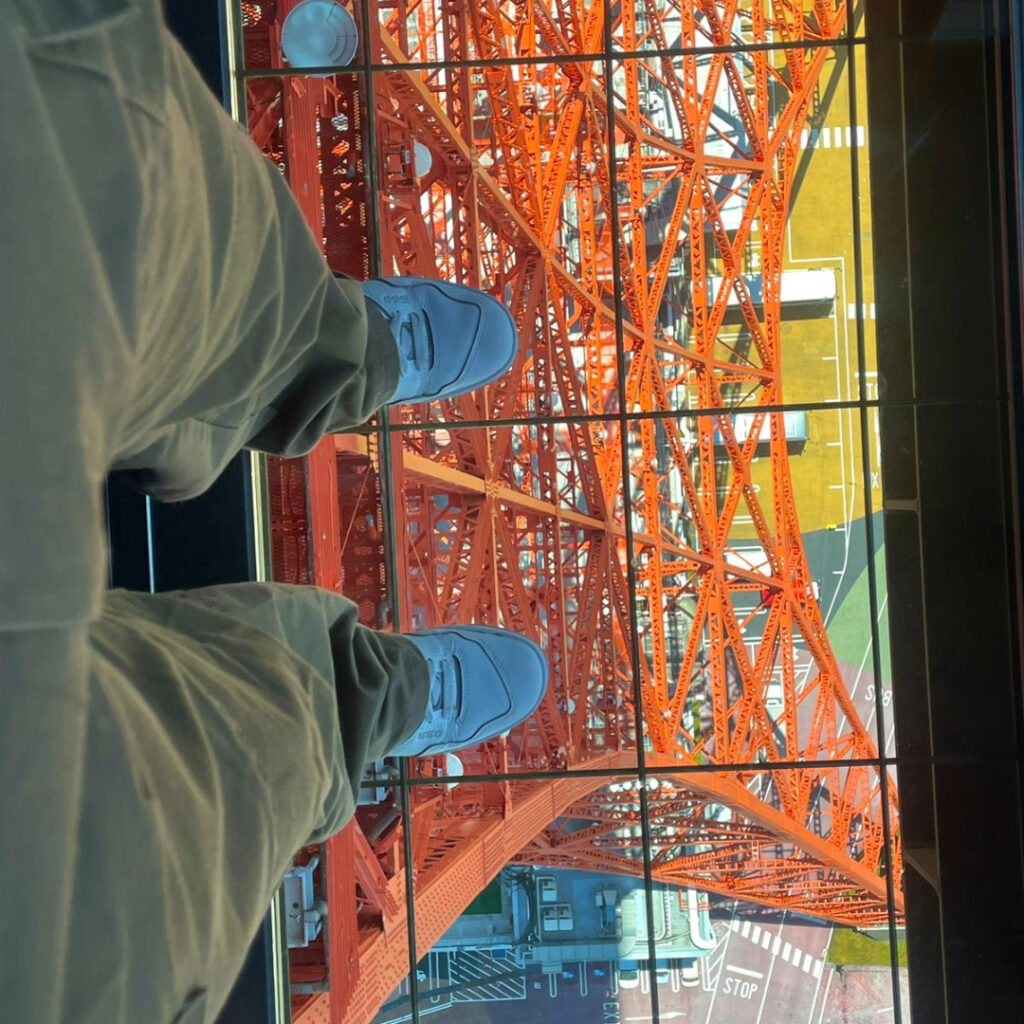
Other floors had gift shops where the class was able to buy souvenirs to take home to their families and friends. Many of the students in SJMC Japan found Tokyo Tower to be an unforgettable experience.
The students’ day did not end there because the highly anticipated Tokyo Fire Museum in Shinjuku proved to be one of the most thrilling visits thus far. The 10-story building features a museum with an observation deck at the top, offering stunning views of Mount Fuji on clear days. Unfortunately, clouds obscured the view from the top floor on Saturday.
Patrick Grainger, globalization representative at Tokyo Fire Museum and Texas State alumni and former Education Abroad staff member at Texas State, led the class through the museum, sharing interesting facts about the evolution of firefighting in Japan, particularly Tokyo. Students were impressed with Grainger’s expansive knowledge on the history of Japan’s fire department and how it came to be. On the tour, the students were able to see firefighter uniforms and tools from the 1600s.
During the tour, Grainger explained the destructive firefighting method during the Edo period in which wooden homes were strategically torn down to prevent the spread of fires, usually by the same architects and construction workers who built the homes. In this way, fire breaks were made to protect the larger community from fast-spreading flames. Later, Grainger also discussed contemporary firefighting techniques with aircraft and firetrucks.
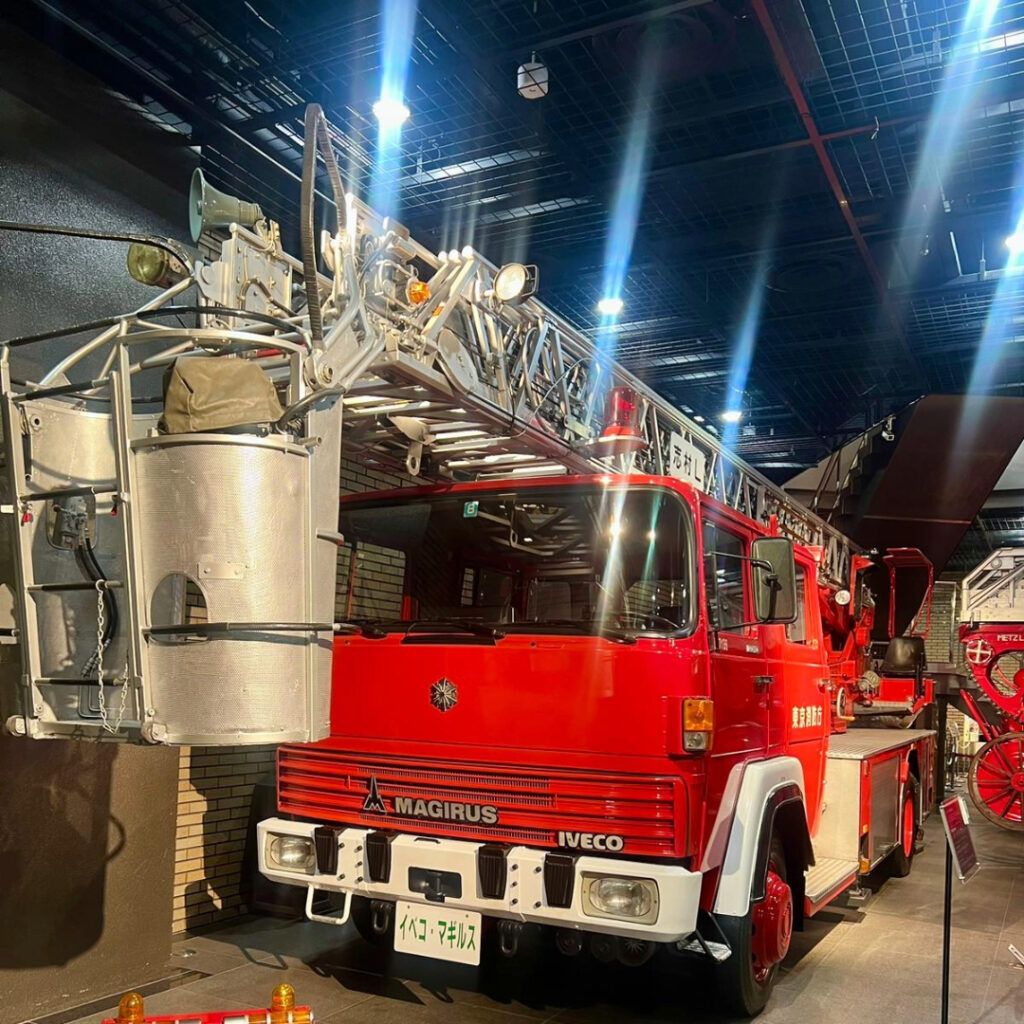
At the end of the tour, Tokyo Fire Museum Director Hironobu Isshiki presented the class with gift bags and gave a brief speech. Students were incredibly grateful as it made the experience all the more personal.
Tuttle said she was moved by the visit.
“I was super intrigued by the whole museum,” Tuttle said. “Our guide was super amazing. I was holding onto every word that he said. I thought that the Edo time period was super interesting. All the innovations in Japan are incredible to me.”
The museum was truly a learning experience for everyone in SJMC Japan as it’s not something that they’ve ever had the opportunity to hear about in such detail.
Earlier in the day, students learned about the history of Zōjō-ji Temple, located near Tokyo Tower. This temple has a rich history and connection with the Tokugawa Shogunate, which ruled Japan for more than 265 years.
The scenic, shady sidewalk welcomed the students to its peaceful grounds. The main hall stood out against its surroundings with its grand traditional architecture in the center of a modern city. Upon their entrance, the class encountered a row of concrete statues resembling dolls, each adorned with a red crocheted head covering. Each statue held a pinwheel that spun briskly in the light breeze, all beneath the shade of the abundant trees lining the temple’s gate.
The class learned that statues were care guardian deities of children and that they represented a memorial for stillborn or miscarried children. They are also meant to protect the safety and growth of children and grandchildren. The red hats on their head are meant to keep them warm, and the pinwheels are meant to symbolize kids.
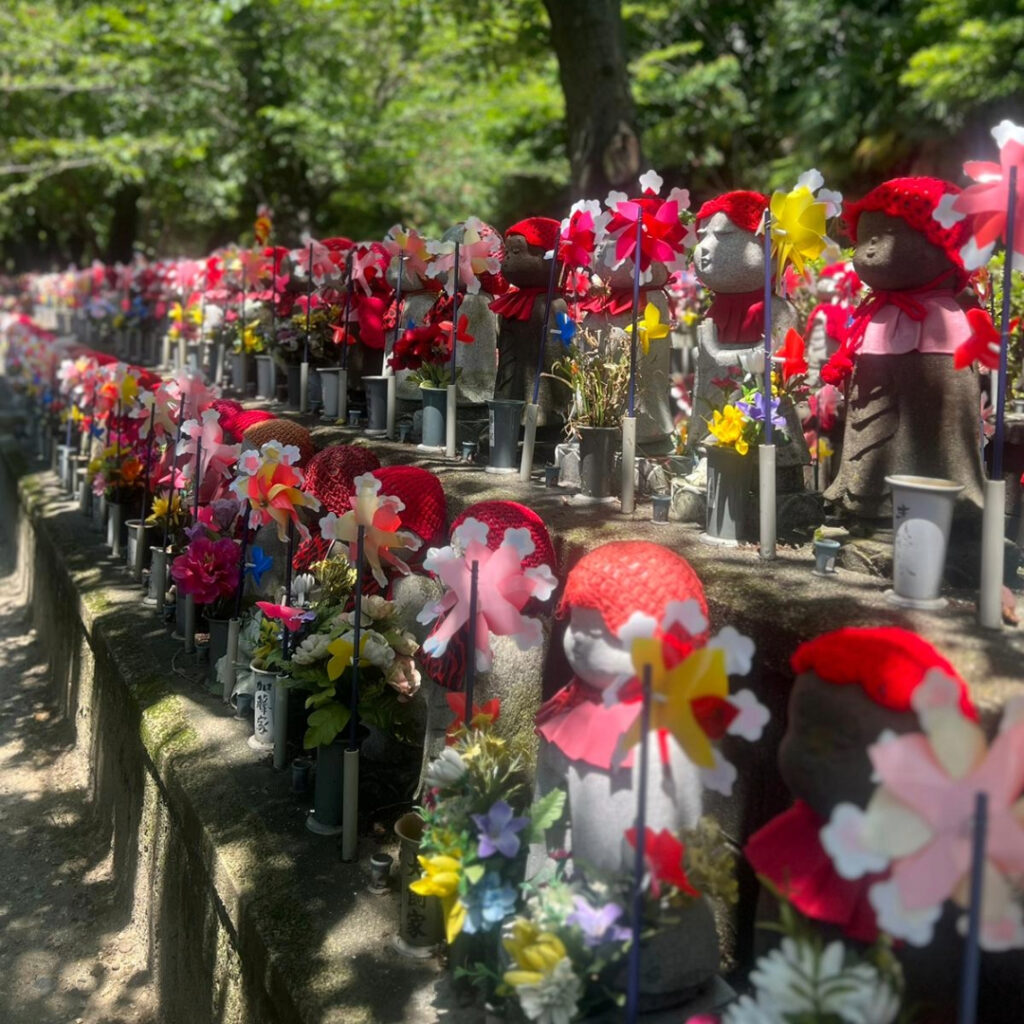
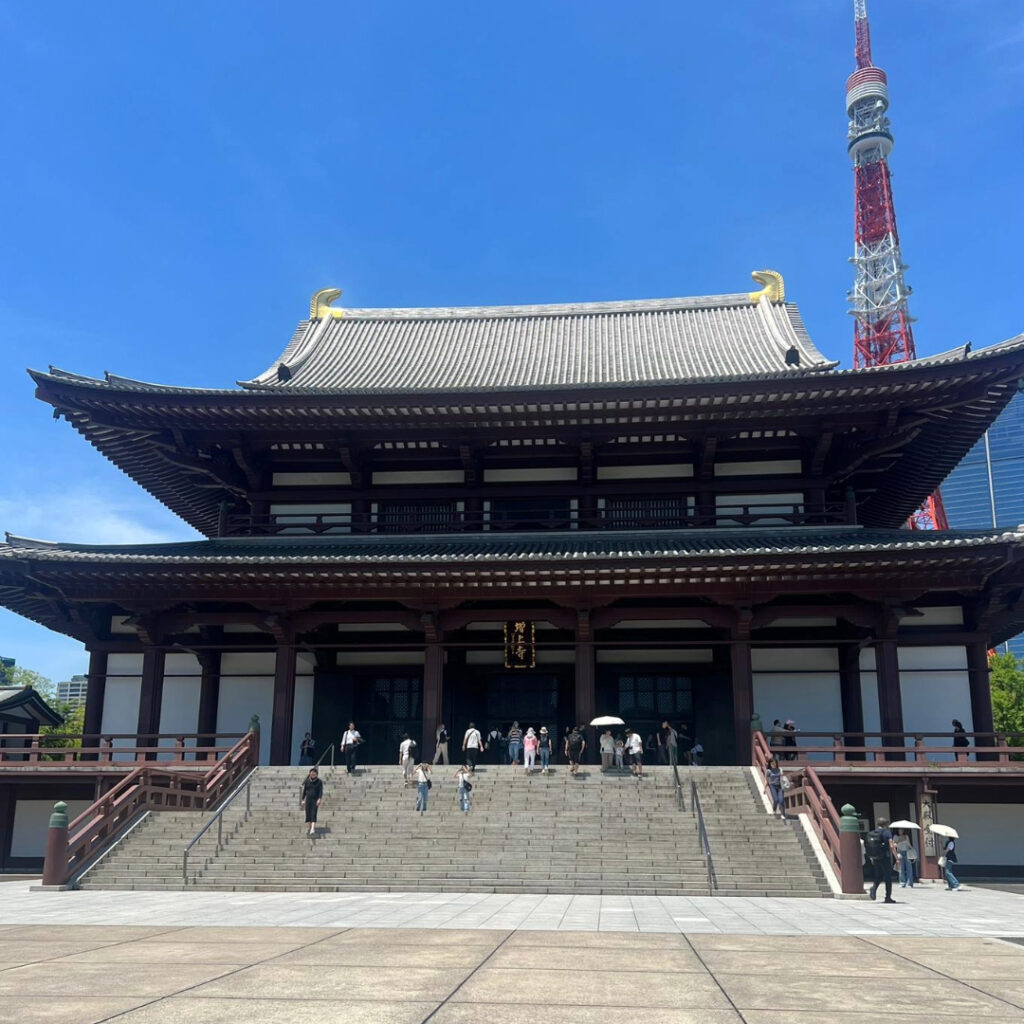
After entering the smaller hall, the class learned about the great Shōgun that founded Zōjō-ji, Tokugawa Ieyasu, and how he was able to maintain peace during Japan’s Edo period. The architecture and size of Zōjō-ji were among the most appealing aspects of it. Students were in awe of the sight and left with a newfound appreciation for its history.
“Today I learned that the great shōgun held peace for the land for [265] years which was the most impressive fact to me,” Winters said.
The class has been hard at work this past week making daily visits to different sites, creating content and wrapping up assignments. On Sunday, students look forward to their first free day in Tokyo where they will be able to relax and explore the parts of the city that interest them most. Others are ecstatic to be attending their first Japanese baseball game at Tokyo Dome!





